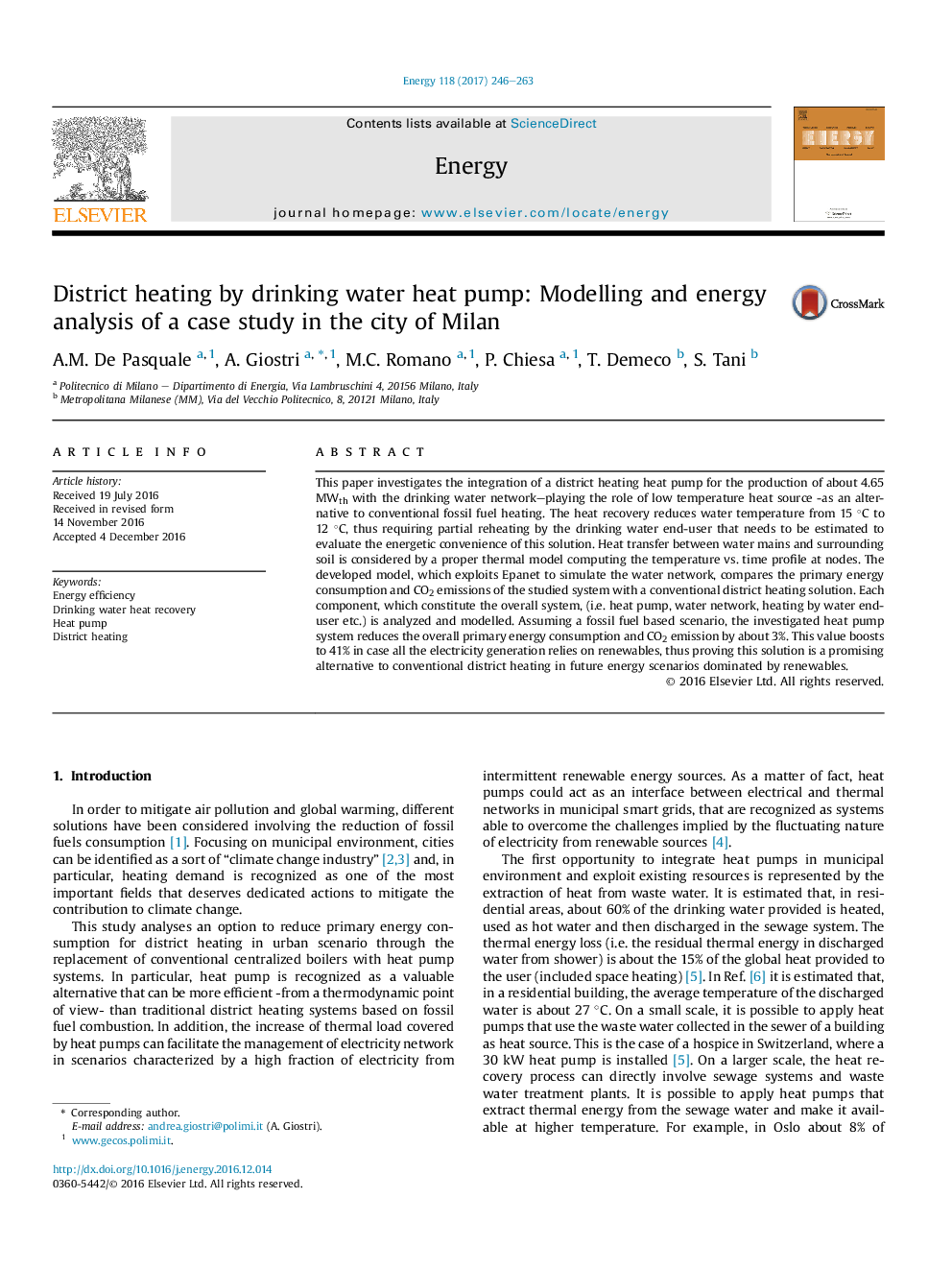| Article ID | Journal | Published Year | Pages | File Type |
|---|---|---|---|---|
| 5477057 | Energy | 2017 | 18 Pages |
Abstract
This paper investigates the integration of a district heating heat pump for the production of about 4.65 MWth with the drinking water network-playing the role of low temperature heat source -as an alternative to conventional fossil fuel heating. The heat recovery reduces water temperature from 15 °C to 12 °C, thus requiring partial reheating by the drinking water end-user that needs to be estimated to evaluate the energetic convenience of this solution. Heat transfer between water mains and surrounding soil is considered by a proper thermal model computing the temperature vs. time profile at nodes. The developed model, which exploits Epanet to simulate the water network, compares the primary energy consumption and CO2 emissions of the studied system with a conventional district heating solution. Each component, which constitute the overall system, (i.e. heat pump, water network, heating by water end-user etc.) is analyzed and modelled. Assuming a fossil fuel based scenario, the investigated heat pump system reduces the overall primary energy consumption and CO2 emission by about 3%. This value boosts to 41% in case all the electricity generation relies on renewables, thus proving this solution is a promising alternative to conventional district heating in future energy scenarios dominated by renewables.
Related Topics
Physical Sciences and Engineering
Energy
Energy (General)
Authors
A.M. De Pasquale, A. Giostri, M.C. Romano, P. Chiesa, T. Demeco, S. Tani,
